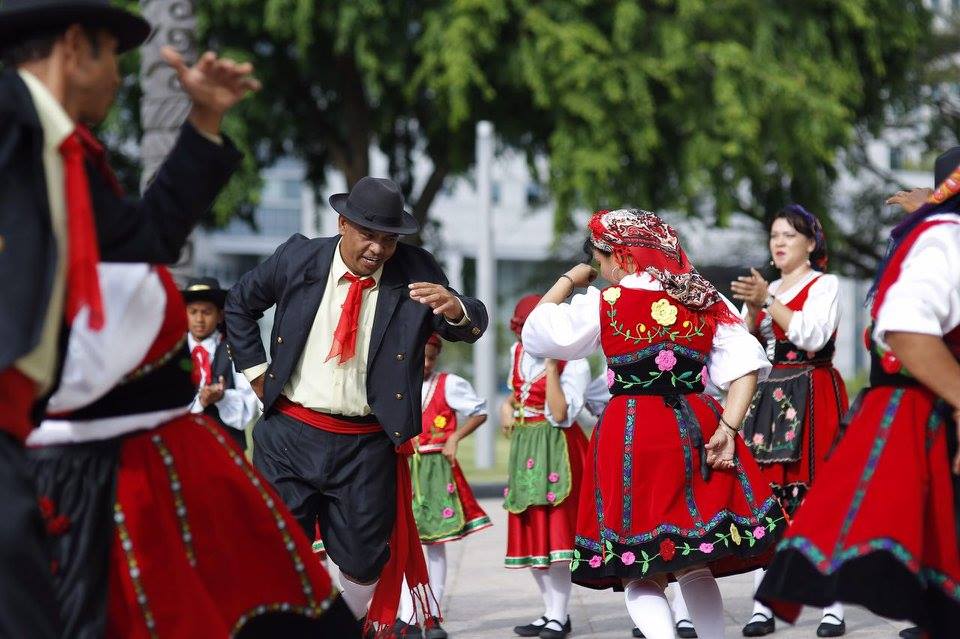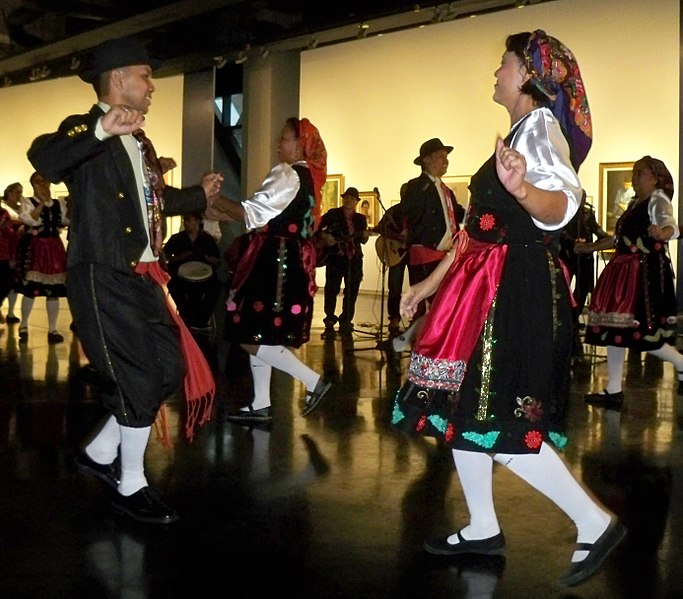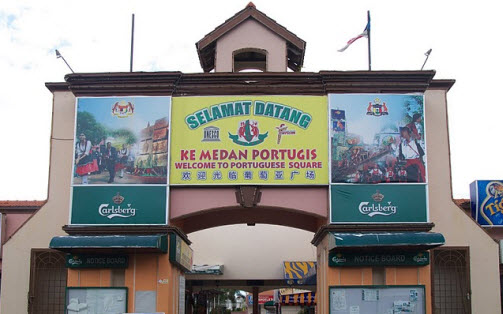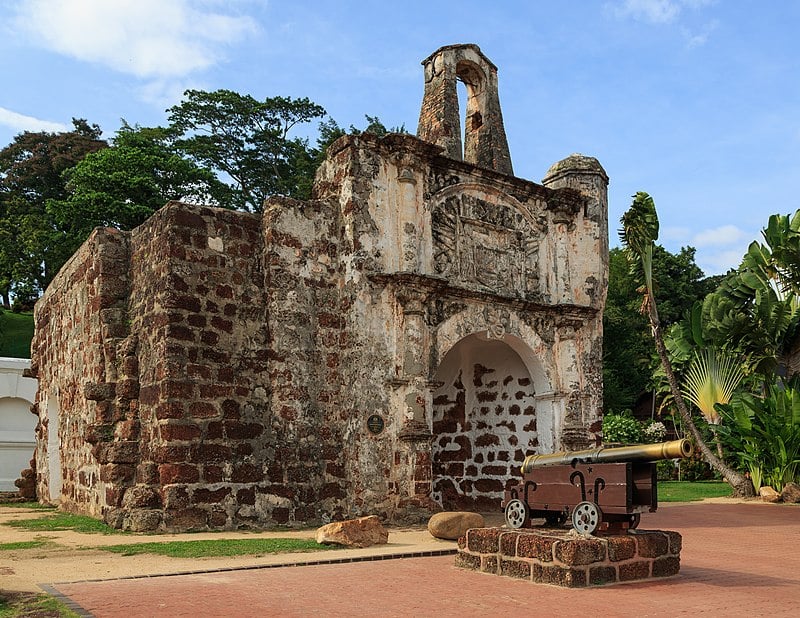
A quick glance at the first photo and you might think you were looking at a traditional dance in some Portuguese village. However, look more closely at the faces and you realise with a start that the scene is more likely taking place in Asia. Your initial confusion is understandable, because these are in fact Eurasians, and they belong to the Kristang community in Malaysia. See this video for a few examples of this fascinating language…
Many of the languages we’ve featured so far, whether in Africa or Asia, are ancient indigenous languages whose very existence has been imperilled by the arrival of colonising armies. However, the case of Kristang is different, because it’s a creole based on the language of the colonisers themselves, It was the Portuguese who conquered the Sultanate of Malacca, in today’s Malaysia, in 1511, making this unusual among languages in that it can lay claim to a precise birthdate.
Historically, when two peoples from different cultural and linguistic came into daily contact for the first time, they usually developed a pidgin language for trading purposes. The 19th-century word pidgin is itself derived from the Chinese mispronunciation of “business”.

Despite its usefulness as a means of communication, a pidgin is no one’s first language. However when the children of pidgin speakers begin to use it as their mother tongue, it becomes transformed into a creole. This was exactly what happened in the case of Kristang, from the Portuguese “cristão”, or Christian), also known as Papia Kristang (“speak Kristang”), Portuguis di Melaka (“Malacca Portuguese”), Linggu Mai (“Mother Tongue”), or simply Papia (“speak”).
Before the arrival of the Portuguese, the lingua franca in the busy trading port of Malacca was known as “Bazaar Malay”, and was used among the resident foreign population which then consisted mainly of Javanese, Tamils and Hokkien Chinese. But when Portuguese began to dominate, the resultant pidgin took on elements of all these, adding words from Dutch, English and Cantonese as it took root over the centuries.

The Portuguese initially used Malacca to establish trade in Malaysia, but lost control of the port to the Dutch in 1642. During those early years, interracial marriages between Portuguese men and local women resulted in the Kristang community, mainly located in the Portuguese Settlement in the city, where many aspects of Portuguese culture, such as religion, music, dance and cuisine are preserved to this day. When large numbers of Eurasians left Malacca for Singapore in the 1820s, the now flourishing creole also gained a foothold there, and a tiny community of around 100 native speakers still exists in the city state, with around 750 or so in Malacca itself and 2000 in the rest of Malaysia. There’s even a community of 200 speakers in Australia.
Unlike most of the languages featured so far, there are few reports of outright discrimination faced by native speakers. However, the sentiment that the language lacks prestige and economic relevance has led to its decline, with people opting for Malay or English instead.
Kristang has subsisted largely as an oral language and is not taught officially in schools, which of course gives rise to orthographical issues. 
Nevertheless, there are several ongoing alternatives by the native speakers to revitalise the language. Philomena Singho maintains a Facebook page where she posts videos daily. Sara Santa Maria gives classes to schoolchildren, who learn the language, music and traditions, while Professor Stefanie Pillai, phonetician and language specialist at the University of Malaya, researches the language. The collective efforts of such advocates have so far resulted in a CD of Catholic prayers, a bi-lingual dictionary and now, a language app that is functioning but is still a work in progress, containing recordings done by the Singhos, Pillai and others, to teach phrases and pronunciation.
Meanwhile, in Singapore, linguistics undergraduate Kevin Martens Wong is a tireless teacher, working with around 400 students for free in a project is called Kodrah Kristang (“Awaken Kristang”). The language also featured in an excellent video on YouTube by Lindsay Williams.
It is endeavours, programmes and videos such as these that conspire to raise awareness of minority languages around the world, rescue them from the threat of oblivion and give them a glimmer of hope of survival.

With the help of research by Dayana Hashim of Translation Commons
See all entries from this Language Watch series


